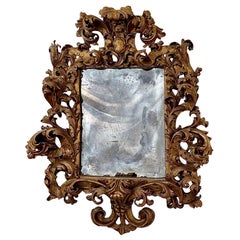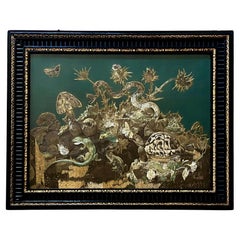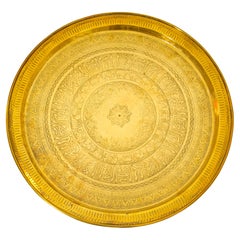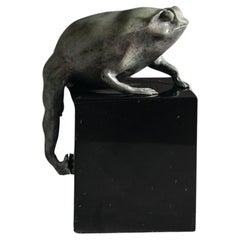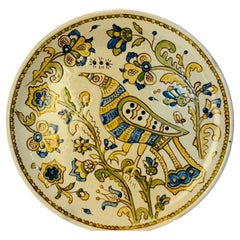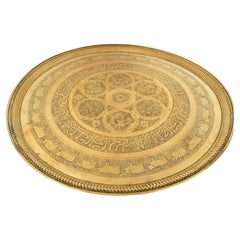Hand-Carved Decorative Art
18th Century Rococo Antique Hand-Carved Decorative Art
Gold Leaf
Mid-19th Century Indian Anglo-Indian Antique Hand-Carved Decorative Art
Silk, Blown Glass, Ebony
19th Century Indian Moorish Antique Hand-Carved Decorative Art
Brass
2010s European Modern Hand-Carved Decorative Art
Marble, Bronze
Mid-20th Century Polish Scandinavian Modern Hand-Carved Decorative Art
Ceramic, Pottery
19th Century Indian Moorish Antique Hand-Carved Decorative Art
Brass
1950s English Vintage Hand-Carved Decorative Art
Brass
18th Century Japanese Edo Antique Hand-Carved Decorative Art
Metal, Iron
18th Century French Antique Hand-Carved Decorative Art
Canvas, Wood, Giltwood
20th Century Chinese Chinese Export Hand-Carved Decorative Art
Wood
18th Century French Louis XVI Antique Hand-Carved Decorative Art
Wood
Mid-20th Century French Mid-Century Modern Hand-Carved Decorative Art
Canvas, Wood, Paint
Early 18th Century French Baroque Antique Hand-Carved Decorative Art
Wood, Giltwood
Late 18th Century French Beaux Arts Antique Hand-Carved Decorative Art
Fruitwood
Late 20th Century French Mid-Century Modern Hand-Carved Decorative Art
Wood, Paint
1770s American American Colonial Antique Hand-Carved Decorative Art
Gold Leaf
Early 1900s French Art Nouveau Antique Hand-Carved Decorative Art
Fruitwood
17th Century Italian Baroque Antique Hand-Carved Decorative Art
Canvas, Giltwood
19th Century Belgian Antique Hand-Carved Decorative Art
Canvas, Plaster, Wood, Giltwood
Mid-20th Century Italian Art Deco Hand-Carved Decorative Art
Alabaster, Metal
Late 17th Century Portuguese Baroque Antique Hand-Carved Decorative Art
Pine, Giltwood
Mid-20th Century French Mid-Century Modern Hand-Carved Decorative Art
Canvas, Wood, Paint
Mid-20th Century French Mid-Century Modern Hand-Carved Decorative Art
Canvas, Wood, Paint
19th Century English Antique Hand-Carved Decorative Art
Oak
18th Century French Rococo Antique Hand-Carved Decorative Art
Canvas, Wood, Giltwood, Paint
Early 20th Century German Greco Roman Hand-Carved Decorative Art
Canvas, Giltwood
Mid-20th Century American Mid-Century Modern Hand-Carved Decorative Art
Wood
Mid-18th Century Italian Baroque Antique Hand-Carved Decorative Art
Fruitwood
1950s American Mid-Century Modern Vintage Hand-Carved Decorative Art
Ceramic, Teak
18th Century Italian Rococo Antique Hand-Carved Decorative Art
Gold Leaf
Mid-17th Century English Jacobean Antique Hand-Carved Decorative Art
Wood, Oak
Late 19th Century Austrian Belle Époque Antique Hand-Carved Decorative Art
Canvas, Giltwood
Early 20th Century Belgian Art Nouveau Hand-Carved Decorative Art
Wood
18th Century Italian Baroque Antique Hand-Carved Decorative Art
Gold Leaf
Mid-18th Century Italian Rococo Antique Hand-Carved Decorative Art
Gold Leaf
18th Century Italian Antique Hand-Carved Decorative Art
Paper, Wood
1860s English William IV Antique Hand-Carved Decorative Art
Canvas, Wood, Giltwood, Paint
19th Century Italian Neoclassical Antique Hand-Carved Decorative Art
Stone
15th Century and Earlier Other Antique Hand-Carved Decorative Art
Natural Fiber
Early 20th Century Chinese Hand-Carved Decorative Art
Teak
Mid-19th Century French Black Forest Antique Hand-Carved Decorative Art
Walnut
17th Century Portuguese Baroque Antique Hand-Carved Decorative Art
Pine, Giltwood
20th Century Spanish Mid-Century Modern Hand-Carved Decorative Art
Wood
Early 1900s French Art Nouveau Antique Hand-Carved Decorative Art
Wood
Early 1900s French Art Nouveau Antique Hand-Carved Decorative Art
Fruitwood
Early 1900s Italian Baroque Antique Hand-Carved Decorative Art
Canvas, Giltwood
Early 20th Century French Art Nouveau Hand-Carved Decorative Art
Glass, Wood
20th Century Indonesian Rustic Hand-Carved Decorative Art
Hardwood
Late 20th Century Hand-Carved Decorative Art
Ceramic, Terracotta, Pottery
Early 20th Century Dutch Art Deco Hand-Carved Decorative Art
Metal, Brass, Zinc, Chrome
19th Century English Victorian Antique Hand-Carved Decorative Art
Oak
19th Century Italian Neoclassical Antique Hand-Carved Decorative Art
Acrylic, Lucite, Wood, Mahogany, Maple, Walnut, Burl
20th Century American Tribal Hand-Carved Decorative Art
Wood, Paint
16th Century Belgian Gothic Antique Hand-Carved Decorative Art
Oak
Late 19th Century French Industrial Antique Hand-Carved Decorative Art
Mirror, Wood
16th Century Belgian Gothic Antique Hand-Carved Decorative Art
Oak
18th Century French Antique Hand-Carved Decorative Art
Wood
Early 1900s Italian Baroque Antique Hand-Carved Decorative Art
Canvas, Giltwood
19th Century European Antique Hand-Carved Decorative Art
Metal
Mid-20th Century French Organic Modern Hand-Carved Decorative Art
Wood, Pine
Read More
At Colonial Williamsburg, Everything Old Is New Again
With the help of a new director, the Virginia institution's folk art and decorative arts museums are undergoing extensive upgrades.
New York’s Hirschl & Adler Showcases the American Workmanship and Design Panache of Neoclassical Treasures
The gallery's latest exhibition proves that museum-quality pieces entice and inspire, whether in traditional or more modern interiors.
